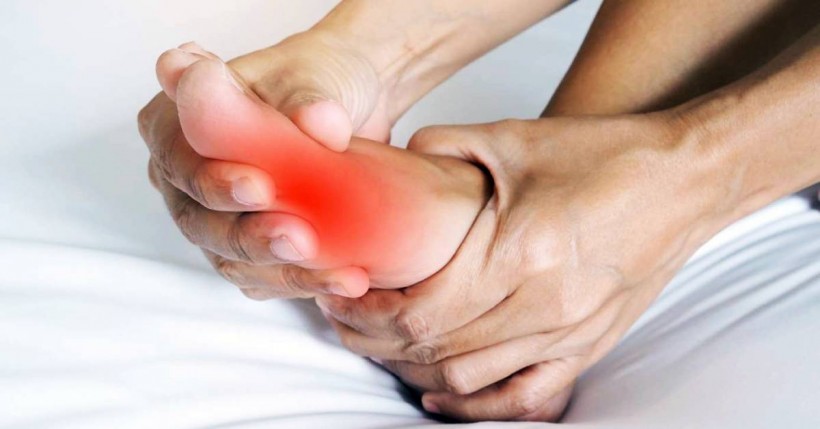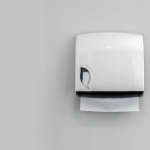Sesamoiditis: What Is It And How Can You Treat It?
Warning: Undefined variable $post in /home/dietofli/public_html/wp-content/plugins/code-snippets/php/snippet-ops.php(584) : eval()'d code on line 3
Warning: Attempt to read property "ID" on null in /home/dietofli/public_html/wp-content/plugins/code-snippets/php/snippet-ops.php(584) : eval()'d code on line 3
The estimated reading time is 8 minutes
Warning: Undefined variable $post in /home/dietofli/public_html/wp-content/plugins/oxygen/component-framework/components/classes/code-block.class.php(115) : eval()'d code on line 3
Warning: Attempt to read property "ID" on null in /home/dietofli/public_html/wp-content/plugins/oxygen/component-framework/components/classes/code-block.class.php(115) : eval()'d code on line 3

What Is Sesamoiditis?
To better understand what sesamoiditis is, you first need to know what sesamoids are. The sesamoids are independent bones in the body. What is characteristic about them is that unlike other bones in the body, which are connected by joints to each other, the sesamoids are only connected to tendons. In fact, the sesamoids are embedded in them.
There are sesamoids in the hands, knees, and feet. The largest sesamoid bone in the body is the kneecap, also known as patella. In the ball of your foot, right under the joint of the great toe, two more small sesamoid bones are present. These sesamoid bones help lift up the big toe bones and bear the weight which the tendons put on the ball of your foot. These two pea-sized bones are known as lateral fibular sesamoid and medial tibial sesamoid.
Sesamoiditis is a condition that occurs when the tendons surrounding the sesamoid bones become inflamed. It usually occurs as a result of straining or loading too much pressure and weight onto the tendons.
Sesamoiditis is very common among ballet dancers, runners, tennis players, footballers, and baseball players as in these activities, there is a lot of pressure and weight put on the ball of the foot. In addition, often walking in high heels can also contribute to sesamoiditis and people that have flat feet or high arches are more likely to get sesamoiditis simply from walking.
Sesamoiditis is most commonly treated with anti-inflammatory drugs, ice, and rest. (1)
Symptoms Of Sesamoiditis
Sesamoiditis caused by overuse develops slowly. Slight pain may be felt under the great toe which increases in intensity until it gets hard for you to walk.
The most common symptoms of sesamoiditis include:
- Swelling around the great toe
- Pain right underneath the great toe
- Difficulty bending or straightening the great toe
- Redness
- Difficulty walking
- Bruising
- Pain that increases in intensity gradually (compared with sesamoid fracture which causes instant pain) (2)
How Can Sesamoiditis Be Diagnosed?
Your doctor is going to examine physically your foot and asks you to tell them how and when the pain began. They’ll carefully check if you feel tenderness or pain in the ball of your foot. They’ll also move your great toe in different directions to examine its flexibility and see if moving it is causing you any pain.
If the doctor suspects that you have a sesamoid fracture, they’ll most likely ask you to get an X-ray of the affected foot or even both feet so that they can compare the structure of bones in each foot.
Since there are details and irregularities that X-rays don’t always show, your doctor may also need to use imaging tests to better diagnose your condition. In addition to X-rays, other imaging tests that your doctor may use include: sonography (ultrasound), bone scan, MRI, and computerized tomography scan.
Who Is More Likely To Get Sesamoiditis?
Although anyone can get sesamoiditis, it’s usually people engaging in activities that require overworking and placing increased pressure on the sesamoids and tendons in the feet that are more likely to get this condition.
People who are at risk for getting sesamoiditis include:
- Athletes
- Runners
- Footballers
- Dancers
- Baseball players
- Tennis players
- Basketball players
- People that have flat feet
- People that frequently wear high heels
- People that have high arches
- People that have gout
- People whose feet tend to roll inward when walking
How Do You Make Sesamoiditis Go Away?
There are several treatment options for sesamoiditis, including:
-
Physical Therapy
In order to improve your range of motion, your doctor may recommend physical therapy, such as ultrasound therapy as well as strength and conditioning exercises.
-
Steroid Injection
If your sesamoiditis is severe, to reduce inflammation and pain, your doctor may recommend delivering a steroid injection into the affected tissue in your foot.
-
Soft Tissue And Moist Heat Therapy
In order to rehabilitate the tissues surrounding the sesamoid bones in your feet, your doctor may recommend soft tissue or moist heat (superficial heat) therapy.
-
A Removable Leg Fracture Brace
In order to reduce pain and pressure, your doctor may recommend that you wear a leg fracture brace.
-
Non-Steroidal Anti-Inflammatory Drugs (NSAIDs)
In order to reduce inflammation and ease pain, you doctor may recommend taking NSAIDs, such as aspirin and ibuprofen.
-
Surgery
Sesamoiditis rarely requires surgery. But, in cases where the pain that sesamoiditis cause doesn’t wear off over time, then surgery might be the best treatment. Your surgeon will remove one of the sesamoids in the foot to reduce inflammation and relieve pain. And this procedure won’t have any adverse effect on your ability to walk or run.
Sesamoiditis Treatment At Home
You can safely treat sesamoiditis at home by making certain changes to your lifestyle. These changes include:
- Often rest. To relieve pain and reduce swelling, stop doing activities, such as running and other sports, which strain your tendons. You’ll need to make sure that there’s no pressure put on the ball of your foot.
- Wear comfortable, supportive, low-heeled shoes that have soft soles.
- Take over-the-counter medications to relieve pain and reduce swelling or inflammation.
- Add cushioned insoles to your shoes to make them more supportive and comfortable.
- To reduce swelling and inflammation, apply a pack of ice cubes to the affected area. You can also wrap an ice cube in a towel and gently massage the ball of your foot with it for ten minutes.
- Avoid wearing high-heeled shoes.
How Long Does Sesamoiditis Take To Heal?
Mild cases of this condition may take several days to resolve. More serious cases, on the other hand, may take months. Moreover, if you undergo surgery, it’ll take the condition longer to heal. And if you treat sesamoiditis at home, it typically takes it around 6 weeks to resolve.
Can Sesamoiditis Be Permanent?
If you leave it untreated or if you don’t let it heal completely, sesamoiditis may cause permanent damage. To prevent this, make sure you take symptoms of this condition seriously and seek medical help on time.
Can Massage Help Relieve Symptoms Of Sesamoiditis?
Gently massaging over the ball of your foot may provide instant relief. Massaging over the sesamoids is not recommended. In addition to increasing blood flow to the sesamoids, massage can also help keep the tendons in the foot flexible, which, in turn, can speed up the healing process.
How To Reduce Your Chances Of Getting Sesamoiditis
- Wear custom-made orthotics. If you have flat feet or high arches or if your job requires putting a lot of pressure and weight on your feet, wearing custom-made orthotics can help decrease the pressure.
- Prevent the tendons in the ball of your foot from getting inflamed by resting after a tough workout or after being highly physically active.
- Wear comfortable and supportive shoes. Avoid wearing uncomfortable or high-heeled shoes too often. Wearing such shoes can cause pain in the ball of your foot.
- Often replace sneakers as the cushioning wears out with time.
How To Resume Activities Once Sesamoiditis Resolves
When you stop doing the activities which were putting a lot of pressure on the tendons and sesamoids in your foot, symptoms of this condition will start to disappear. But, the main question rising here is: How can you resume these activities safely?
To do this, you need to follow your doctor’s recommendations concerning this and the signals of your own body as well. (3)
Conclusion
- Sesamoiditis is a condition which develops when the tendons that surround the sesamoid bones in the foot become inflamed.
- Ballet dancers, baseball players, footballers, runners, basketball players as well as people that have high arches or flat feet are more likely to get sesamoiditis.
- The most common symptoms of sesamoiditis include: swelling, redness, bruising, pain in the ball of the foot, and difficulty bending the great toe.
- Sesamoiditis is diagnosed by a physical examination, and in some cases, imaging tests can be used.
- Treatment options for sesamoiditis include: Physical therapy, steroid injection, soft tissue therapy, moist heat therapy, wearing a leg fracture brace, taking NSAIDs, and undergoing surgery.
- Treatment options for sesamoiditis at home include: Resting, wearing comfortable and supportive shoes, wearing shoes with cushioned insoles, and applying an ice pack to the ball of the foot.
- Doing stretch and conditioning exercises can also help alleviate symptoms of sesamoiditis.
- Sesamoiditis may take several days or several months to resolve, depending on its severity.
- When it comes to home sesamoiditis treatment, it typically takes this condition approximately 6 weeks to resolve.
- If left untreated, sesamoiditis may lead to permanent damage.
- Massage can help ease symptoms of sesamoiditis.
- You can reduce your risk of getting sesamoiditis by wearing comfortable and supportive shoes as well as custom-made orthotics, resting after being highly physically active, and regularly replacing sneakers.
- In order to resume activities safely once sesamoiditis has resolved, follow your doctor’s recommendations about this.














